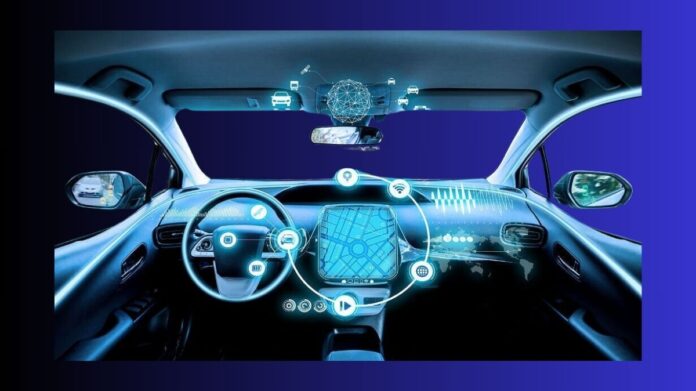Heterogeneous Cloud Computing
A revolution is being driven by an optimised automatic driving system that leverages heterogeneous compute.
The company’s most recent whitepaper analyses the benefits of Qualcomm Ride Solutions, which are built on heterogeneous computation System on Chips (SoCs).
What is ADAS system?
The growing reliance of the automotive industry on autonomous driving has resulted in a notable need for advanced driver assistance systems (ADAS).The capacity of these systems to rapidly analyse vast quantities of varied sensor data is a necessary condition for their capacity to make significant conclusions. In order to fulfil these challenging requirements, Qualcomm Technologies, Inc. has developed Snapdragon Ride solutions. These methods utilise systems on chips (SoCs) designed for heterogeneous computation.
Heterogeneous Compute in car ADAS system
An ability derived from the utilisation of heterogeneous computing. In computer systems, “heterogeneous compute” refers to the use of different processing units, such as CPUs, NPUs, DSPs, GPUs, and computer vision accelerators, to perform specific tasks more efficiently.
ADAS system features
To access the following features, Qualcomm’s ADAS platform utilises the capabilities of heterogeneous computing:
The level of productivity and effectiveness has been enhanced. ADAS systems necessitate a substantial amount of computational capacity to handle data processing from several sensors, execute intricate algorithms, and effectively manage extensive data flow. Heterogeneous computing allows for the distribution of tasks, which enhances power efficiency and enhances overall system performance in Advanced Driver Assistance Systems (ADAS) applications.
This is achieved by leveraging the capabilities of different processing units. Furthermore, the utilisation of artificial intelligence compilers, enhanced data compression techniques, and optimised memory architecture enables efficient data processing while limiting the need for offloading to DDR.
Optimal integration of sensors: Sensor fusion, a fundamental component of ADAS systems, enables the creation of a comprehensive representation of the environment. This procedure entails combining data from many sensors. ADAS systems can employ either early fusion or late fusion, depending on safety principles. Early fusion involves combining transformer-based artificial intelligence frameworks, whereas late fusion refers to a different approach. Both of these alternatives are feasible.
Urban navigation skills: In order to cope with challenging urban environments, it is imperative to develop new artificial intelligence planners and end-to-end architectures that can effectively manage the growing complexity of L2+ systems. These novel architectures can vary from simple sensor-to-trajectory models to complex artificial intelligence models using online planning algorithms like Monte Carlo Tree Search (MCTS) and path optimisation techniques such as Quadratic Programming (QP) or Dynamic Programming (DP).
To meet the necessary requirements for latency and throughput, these different designs greatly benefit from the use of a heterogeneous computer architecture, as well as efficient memory and data compression methods made possible by the System-on-Chips (SoCs).
To enhance the whole experience: Another important application where basic models and LLM agents can benefit is the integration of ADAS with in-vehicle infotainment (IVI) systems. This use case can leverage many use cases hosted on the System on a Chip (SoC) that can benefit from both the Advanced Driver Assistance Systems (ADAS) sensors and the sensors inside the vehicle cabin.
Qualcomm’s System-on-Chips (SoCs) are specifically engineered to handle diverse types of computation, including heterogeneous tasks. Additionally, they are purposefully created to accommodate use cases that involve a combination of different levels of importance or urgency.
The ability to respond immediately: The ability to respond immediately is extremely important in the fast-paced field of Advanced Driver Assistance Systems (ADAS). Heterogeneous compute enables simultaneous execution of numerous tasks, hence improving the efficiency of data processing and decision-making. The ADAS platform leverages this power to make crucial decisions in real-time, hence improving the safety and reliability of ADAS systems.
Optimising power consumption and temperature control is essential for ADAS systems, as they are frequently deployed in areas with limited resources. By using the most energy-efficient CPU units for certain workloads, Qualcomm’s heterogeneous computing technique aims to minimise power consumption.
The Qualcomm Hexagon digital signal processor (DSP), developed by Qualcomm Technologies, is found in a vast number of Qualcomm’s Snapdragon CPUs. This DSP has been specially tuned to deliver optimal performance in speech, visual, and audio processing applications.This helps to control temperature constraints and reduces power consumption, extending the life and dependability of ADAS systems.
Please download Qualcomm’s extensive whitepaper titled “Efficient Heterogenous Compute with Parallel Processing for ADAS.” Qualcomm’s extend a warm invitation for you to access this document. This whitepaper examines the profound influence of heterogeneous processing on Advanced Driver Assistance Systems (ADAS).
This source not only offers helpful examples and detailed technical knowledge, but also provides a thorough overview of how Qualcomm’s Advanced Driver Assistance Systems (ADAS) platform revolutionises the automobile industry by using various computational resources.
Advanced driver assistance systems (ADAS) are crucial for the progress of the automotive industry because to their substantial impact on improving driving safety and fuel efficiency. Qualcomm’s created heterogeneous computing technology is establishing the benchmark for this transformation by enhancing the performance, real-time responsiveness, and power efficiency of ADAS systems.


